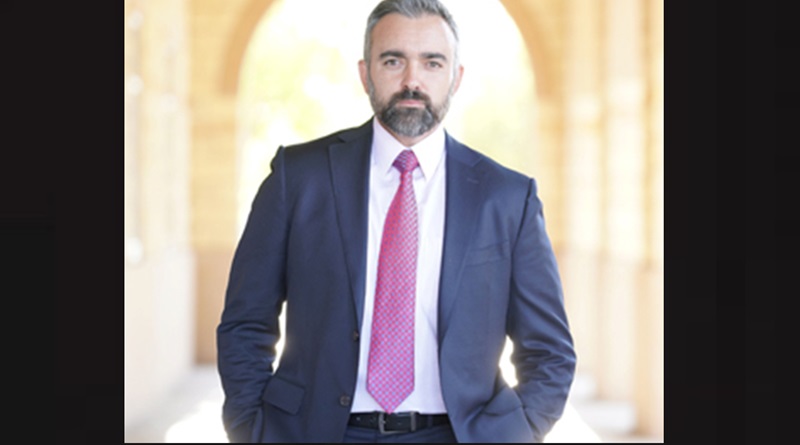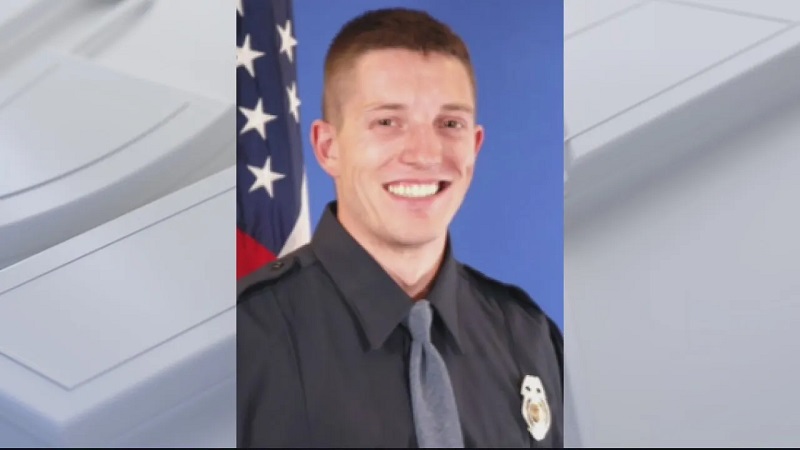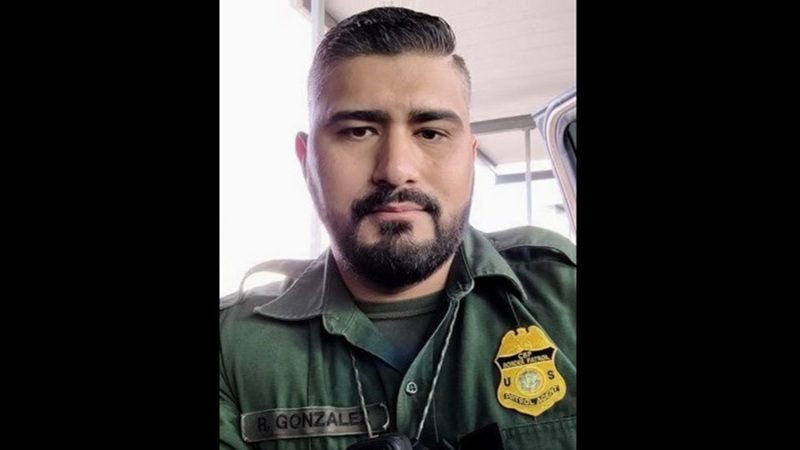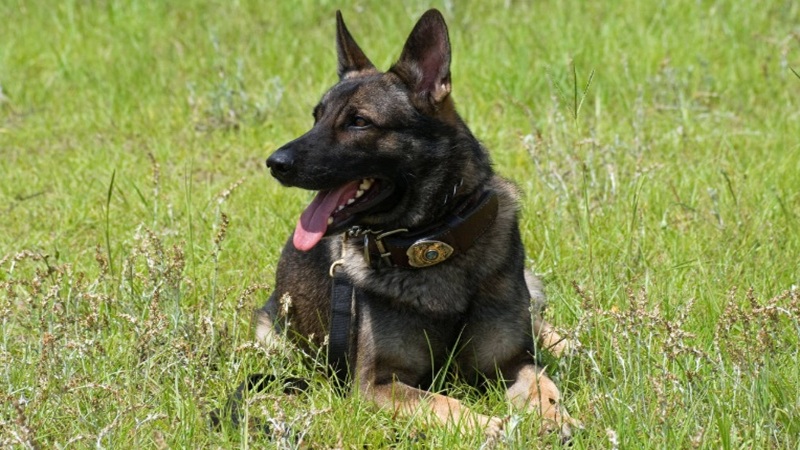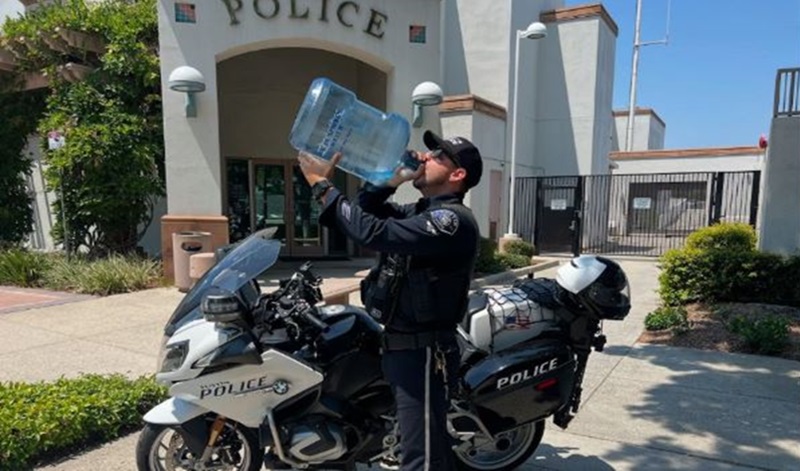
The sheer aspects of law enforcement officers patrolling public spaces mean inclement weather, from snow to hurricanes to blistering heat, automatically poses threats by natural means, for which salvation is not necessarily easily attainable.
How many careers are there whereby living in a barrel (body armor) is an imperative norm?
America’s cops wrap themselves in ballistic vests for obvious reasons. Although such a piece of duty equipment is enormously helpful in parts of the country where frigid weather visits, down south and in tropical locales, it is a difficult situation with which cops contend.
According to South Florida Cops, Maui, Hawaii, police department Officer Alexa Jacobs fell into “a coma in the hospital after suffering heat stroke during physical training at the police academy [in February 2022]. She was reportedly brought to the hospital with a body temperature of an astounding 107 degrees. Her organs began shutting down and she [was being considered for] a liver transplant.”
Recently, an NYPD probationary officer in training, days before academy graduation, succumbed to heat exhaustion. Per the Officer Down Memorial Page (ODMP), Officer Edgar Ordonez “died after collapsing in the heat while training at an NYPD shooting range.”
Unofficially, NYPD pals claim this was avoidable…if not for Gotham’s politicos rushing to get recruits through the academy to offset severe understaffing stemming from the ongoing exodus of cops due to anti-police movement and antithetical bail reform advocates.
In the Sunshine State (there’s a hot clue), temps do brim beyond 100 degrees, making for hugely uncomfortable conditions for law enforcement officers who, by sheer duty-bound covenants, must exit air-conditioned police cruisers to mitigate the dilemmas of complainants.
The partial solution is for officers to equip their cruisers with devices specially crafted to circulate into the body armor barrel to expressly cool cops enduring the swelter while on patrol.
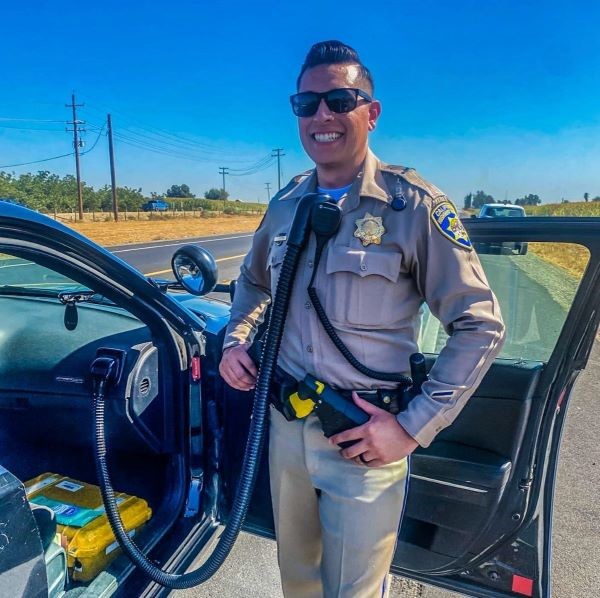
(Photo courtesy of the California Highway Patrol.)
Of course, this assumes the call a cop is on allows for a brief break of cool air circulation. If it is a hot-button response, the likelihood of attaching A/C hosing to slow perspiration and abate dehydration is minuscule if at all possible.
It could be worse…
Harley Hot
Motorcycle cops (“motor units”) are, by design, smaller modes of transport that are inherently manufactured for open-air travel. Motorcycles give off additional heat; they are not equipped with A/C.
Since heat rises, motorcycle cops fasten required safety helmets (equipped with electronics for transmitting/receiving communication), locking in temps like a sealed oven.
A spokesperson with the Tustin, California, police department sized it this way: “It’s hot out there, folks! Our Motor Officers are no strangers to warm days as they patrol the city without the luxury of air conditioning while wearing a vest and various equipment.”
On top of that, motorcycle cops conduct traffic stops on automobiles whose heat emissions and exhaust pipes throw off plenty more heat…with officers receiving a copious amount of intensely hot air and fumes, not to mention the glaring skies that cause squinting (headaches).
Have you ever seen a motorcycle cop without mirrored sunglasses? Me neither. A clue!
Traditionally, motorcycle cops wear shiny boots. Aesthetically, it is iconic. Environmentally, lack of aeration comes to mind.
The mask mandates stemming from the pandemic added to the stifling conditions for motorcycle cops.
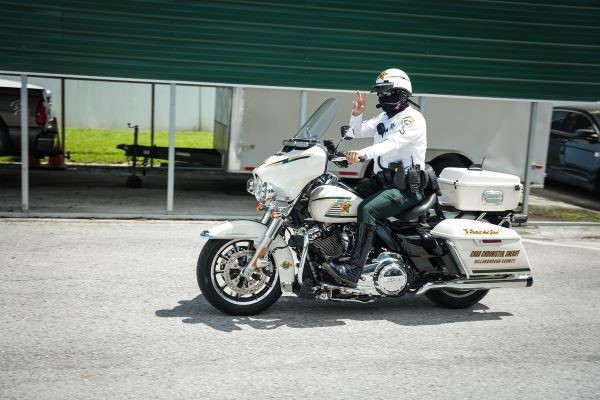
(Photo courtesy of the Hillsborough County Sheriff’s Office.)
In Florida, the state’s 67 county sheriff’s offices predominantly wear dark green uniforms—both trousers and shirts. Dark clothing and intense heat are not friends. Perhaps that is why some of the 67 county-level law enforcement agencies opted for white uniform shirts.
Similarly, dark-blue uniforms are worn by municipal police departments (like mine, factoring into the reason I preferred the midnight shift).
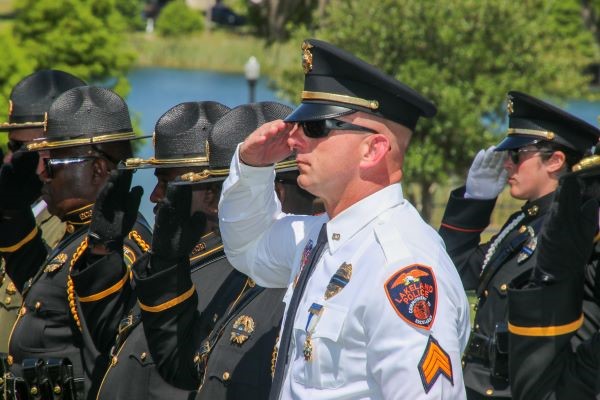
(Photo courtesy of the Lakeland Police Department.)
Some agencies have switched to white uniform shirts for sworn officers, offering a bit of a break from the thermometer spike.
Febreze is our Friend
Thanks to my Sam’s Club membership, I afforded a bulk supply of Febreze to freshen my ballistic vest and uniform shirts, enabling me to get through each 12-hour shift without buzzards following me around and sizing me up as a buffet nearing ripeness.
There were plastic bottles of Febreze all around the police locker room, a telling sign of how humidity was mitigated to some degree.
I remember my attendance at the first of many police officer funerals. An extremely hot day taunted throngs of cops in class-A uniforms (hats, ties, long sleeves, black duty footwear), lined tightly due to the enormous swell of LEOs paying respects to a fallen officer.
In three separate areas, small disturbances erupted. Each was due to fainting while hundreds of cops stood at attention in what seemed an inordinate period, at full attention, rigid, the merciless sun doing its thing.
Under my dark blue class-A attire, my spine felt like a running brook. I sweat profusely. Even Febreze was no match for a blistering sun. My “barrel” was swimming.
But Twilight
There’s a good reason I bid for midnight shift squads throughout my police career; I didn’t want to contend with the atomic ball.
My tours of duty were from dusk to dawn.
The Sunshine State lives up to its name and has degrees to prove it. Notoriously, the blistering temps in Florida can be unbearable…unless you are an iguana.
Physiologically, I have never been one to thrive in warmer temperatures, preferring chill instead. (I know, oddball living in the south.)
Annually, my department exercised a tradition whereby the sworn police force members would bid for shifts based on seniority. Given that, as a rookie officer, I figured I’d have to put some years in to garner enough clout to choose a midnight shift slot to stay as cool as possible. Little did I know, most cops, regardless of seniority, preferred to police with day-shift squads. Hence, I largely experienced my police career when the sun did a siesta.
There were always stories of day-shift officers experiencing super-busy days leading to minimized fluid intake (dehydration) and fatigue from “living in a barrel” (body armor) throughout the summer scorch.
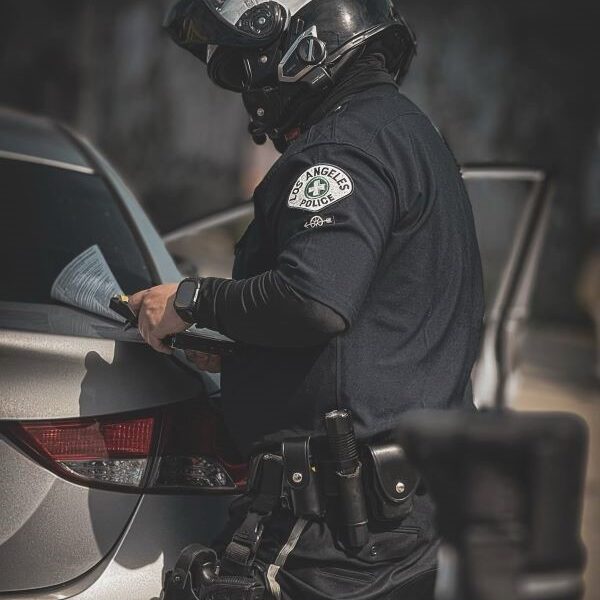
(Photo courtesy of the Los Angeles Police Department.)
A chronic issue among many day-shift cops is sinusitis. I fell victim to this on the midnight shift, too. The incessant nature of getting in/out of an air-conditioned police cruiser wreaks havoc on sinus cavities…but the Job must be accomplished despite inclement elements.
Brutal weather conditions are absolutely among the many stressors cops endure to serve the citizenry, with the sun beating down.
Many Florida law enforcement agencies recognize this. That is why police-blue shorts were authorized (bicycle unit cops exhibit this more routinely).
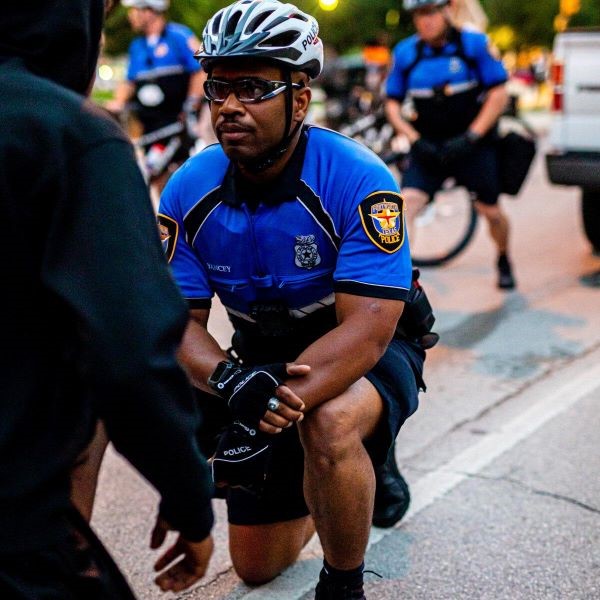
(Photo courtesy of the Fort Worth Police Department.)
Wicking shirts are part of the uniform during the sweltering months. Body armor, though, is mandatory…especially if the department purchased it (which became the norm anyway).
Speaking of body armor, the multiple pieces of protective equipment and almost total covering of every SWAT member responding to major calls during unbearably hot temperatures can easily be deemed a duty hazard…but they go out and round up bad actors nevertheless.
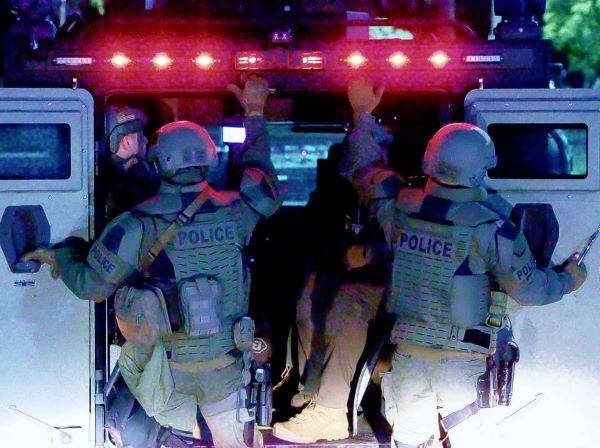
(Photo courtesy of the Whittier Police Department.)
It is not just the criminal elements that threaten cops; natural ones pose woes and cannot be altered, only mitigated. Despite the drastic range between heat and frost, America’s cops head out and bear the weather to deliver public safety to the utmost degree.
Make a difference support the NPA



